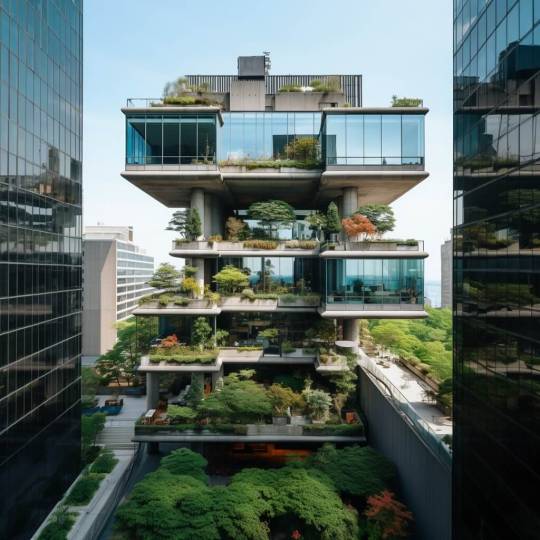#Biophysics
Explore tagged Tumblr posts
Text
people who work/study in quantitative bio-adjacent fields, rise up. computational neuroscience where you get to see someone's thoughts in feelings in graph form??? so cool. biophysics where you can pass blood plasma through an electric field to determine whether a patient has cancer or not?? unbelievable. biomedical engineering where you can literally build a device to pump someone's heart and be the difference between their life and death??? oh my god. disease modelling, being able to predict AND prevent communities being affected by disease on a large scale through your analysis of data??? i love science
#biomedical engineering#bme#biophysics#healthcare#science academic#chemblr#bioblr#physics#physblr#neuroscience#brains#cell bio#research#sciblr#studyblr
204 notes
·
View notes
Text

Franklin, Rosalind Elsie and Gosling, Raymond George. Photo 51. 1952, King´s College London in London, England
The genetic material glimpsed in Photo 51 connects all living things and the image thus metaphorically captures human past, present, and future. It also marks an important milestone in science. In the last half-century, research that drew from Franklin’s photograph has brought advances in biology, medicine, paleontology, and many other parts of life.
138 notes
·
View notes
Text
Swimming Like a Ray

Manta rays are amazing and efficient swimmers -- a necessity for any large animal that survives on tiny plankton. Researchers have built a new soft robot inspired by swimming mantas. (Image credit: J. Lanoy; video and research credit: H. Qing et al.; via Ars Technica) Read the full article
42 notes
·
View notes
Text


I have two exams tomorrow, one of them being biophysics (ifykyk). I decided to study all day today, to wake up early and be focused. It's 7PM and I haven't started yet...😺.
I did wake up at 7AM, like planned, but I just read briefly for the second exam and got tired. So I scrolled on social media, watched stuff, had a nap. I'm not fully prepared, but at least I treated myself with food. A day break before exam has a lot of benefits anyway so it's okay. I also have some time tomorrow morning. I'll get to it right now without pressuring myself and I'll sleep peacefully because it's important.
Anyways, here's a reminder to not be too hard on yourself. If you didn't study like you planned to, procrastinated or simply couldn't understand it's okay, you're human. Don't make studying something that you punish yourself for after not doing it perfeclty like you wanted to. You can always do better next time! If you keep doing hard on yourself , you'll keep associating it with that and you'll feel drained, stress and pressured before even starting everytime. So please, make it FUN, remind yourself why you're doing this 🫶🏻
I'll update tomorrow for my exams, see ya 🧸
#studyblr#biology#study motivation#studying#aesthetic#study aesthetic#study blog#studyspo#academic weapon#food#miffy#miffy glass#miffy the rabbit#study tips#student#student life#realistic studyblr#biophysics
25 notes
·
View notes
Text
YO *throws rock out into the wild [of tumblr]* science side of tumblr what single discovery in your field of work would scare the shit out of everyone present???
#science#biology#geology#scientists#environment#science side of tumblr#science side explain#marine biology#marine life#chemistry#earth science#astronomy#astrology#physics#ecology#engineering#engineers#biochemistry#botany#computer science#computer scientist#information science#mathmatics#math major#social science#archeology#bacteriology#biophysics#educational science#rocks
21 notes
·
View notes
Text










Green Building, Shiraz, Iran,
Courtesy: Taybe Kazmi
#art#design#architecture#luxury pad#luxury lifestyle#ultimate pad#interior design#luxurypad#concept#render#iran#shiraz#luxury house#luxury home#taybe kazmi#building#green house#biophysics
107 notes
·
View notes
Text
Work on a scientific article
What it actuallly entails:
Come up with an idea, define an interesting problem
Do thorough literature research. Maybe similar stuff was already done. Define the knowledge gap well.
Plan in detail, how we can solve the problem, design experiments
Reach out to potential collaborators, agree with them on a plan
Buy necessary equipment, chemicals
Do pilot experiment, optimize the conditions to get reliable data
Perform experiments, calculations, make everything multiple times so it's reliable
Analyze the data
Urge collaborators to deliver their parts
Coordinate your progress with the collaborators
Manage the collaborations, organize meetings
Be diplomatic, you don't want to make enemies in academia
Agree with direct colleagues, who worked on it, what will be the message of the article. Will it be a long story and we need to add some more data? Or will it be short and right to the point and we write a short "letter"?
Do literature research again. Maybe new stuff appeared, and for sure your data must be confronted and discussed with already known facts.
Write the first draft of the article
Send it around for feedback, first only to direct colleagues from your lab
Incorporate the feedback, maybe do more experiments and more analysis
Rewrite the manuscript
Send it around the second, third, fourth, fifth... time
Incorporate the feedback
Send the manuscript to all collaborators.
Wait for the feedback, urge everyone to give it, maybe you don't have all data from all the collaborators yet
Incorporate feedback
Prepare the manuscript for journal submission
Get approval from all co-authors
Submit the manuscript
Wait for editor response, hopefully they send it to reviewers. If not, you need to rewrite a bit the article to adhere to the new journal's format and send somewhere else.
Get reviewers' reports, deal with them, reply truthfully, make effort to explain everything even if you know that the reviewer's suggestion is just impossible or irrelevant. Be diplomatic.
Maybe you need to do an additional experiment, analysis, or rewrite a major part fo the manuscript. This can take months.
Submit revised manuscript with all the changes
Wait for editor's nad reviewers' comments in the second round. You can get many rounds of review and still get rejected.
Finally get a "Congratulations, your manuscript has been accepted for publication"
Pop a shampagne! You deserve it!
What part of this do you usually do in different career stages:
BSc. and MSc. students: Perform experiments and analyze data
PhD students: Do all the experimental and analysis parts, write the manuscript, discuss with their supervisor and direct colleagues, incorporate feedback. But does not have to come up with their own idea and manage collaborations and diplomacy.
Postdocs: Do literally everything on the list
Group leader/Professor: Do the thinking and managing parts, help with writing and feedback, provide discussions and insight. Do not perform actual experiments and analysis.
Being a postdoc is the transformation between the student and the group leader.
As such, we just have to do all these tasks. It's stressful. It's challenging. It's definitely not boring. I am taking every opportunity to get a student, who can help with the experimental repetitions so I have time for all the other stuff.
#science#women in science#research#postdoc#group leader#academia#phd student#PhD#manuscript#article#publishing#scientific publication#overload#overworked#tasks#to do list#insights#biophysics#physics#biology#stem#original content
50 notes
·
View notes
Text
When you're a tiny nematode, electrical fields are positively uplifting. Literally. The most famous nematode of all – Caenorhabditis elegans – has been caught using electrical fields to its advantage. The tiny worm can somehow piggyback on electrical fields to jump a surprising distance, across a petri dish, for example, or onto the back of a bumblebee for a ride to a new locale. It's not entirely clear how the nematodes do this, but thanks to an experiment led by biologist Takuya Chiba of Hokkaido University in Japan, it's now apparent that these tiny animals use electrical fields to disperse far afield into new habitats. "Pollinators, such as insects and hummingbirds, are known to be electrically charged, and it is believed that pollen is attracted by the electric field formed by the pollinator and the plant," says biophysicist Takuma Sugi of Hiroshima University in Japan, co-senior author on the study.
Continue Reading
178 notes
·
View notes
Text

29.07.2024 // 2.20pm green study aesthetic 🍵⋆。°🍡°⋆. ࿔*:・
#aesthetic#new studyblr#100 days of productivity#study aesthetic#studying#study blog#study hard#study#study motivation#study notes#study study study#study session#study space#college studyblr#studyblr community#studyblr#study blr#science#sciblr#stemblr#physiology#biophysics#exams#finals#finals season#college student#study inspiration#study inspo#studyinspo#study in india
22 notes
·
View notes
Text
Xiaowei Zhuang
youtube
Xiaowei Zhuang was born in 1972 in Rugao, China. Zhuang is a biophysicist whose work focuses on single-molecule biology and bioimaging. She works to develop imaging techniques for the quantitative study of biological systems. Zhuang developed the stochastic optical reconstruction microscopy, or STORM, method. This became one of the most widely used methods for super resolution imaging and a critical tool for furthering the understanding of molecular structures within cells. Zhuang has won numerous awards for her work, including the NAS Award in Molecular Biology, the Vilcek Prize in Biomedical Science, and the Dreyfus Prize. In 2024, she was inducted into the National Inventors Hall of Fame.
7 notes
·
View notes
Text
Introduction to the Schumann Resonance
The Schumann Resonance is often described as the heartbeat of the Earth. It is named after physicist Winfried Otto Schumann, who predicted its existence in 1952. The Schumann Resonance is basically a set of electromagnetic waves that circle around the Earth outside the atmosphere, between the Earth's surface, and through the ionosphere. *the ionosphere is an atmospheric layer that contains charged particles* These waves resonate at specific frequencies, the main one being 7.83 Hz.
So why does this happen? Think of the space between the Earth's surface and the ionosphere as a drum. Lightning strikes, of which there are thousands happening all over the world at any moment, act like drumsticks, hitting the drum and creating sound. But instead of sound, these strikes create electromagnetic waves that bounce between the Earth and the ionosphere, creating the Schumann Resonance.

The Earth’s surface and the ionosphere form what’s called a resonant cavity. A resonant cavity is essentially a space where waves can bounce back and forth, reinforcing each other under the right conditions. In this case, the electromagnetic waves generated by lightning strikes travel through the cavity formed by the Earth's conductive surface and the ionosphere, reflecting off of each boundary.
This space between the surface of the Earth and the ionosphere is about 34 miles (or roughly 55 kilometers) thick, acting like the drumhead in the analogy. Because this cavity is relatively constant in size, it supports specific frequencies of electromagnetic waves, with 7.83 Hz being the dominant one due to the size and shape of the cavity. It’s similar to how a guitar string resonates at a certain pitch depending on its length and tension.
The fundamental frequency of 7.83 Hz is just one of several resonant frequencies. These frequencies, known as harmonics, occur because the cavity can support different "modes" of wave vibration. Beyond the fundamental mode, there are higher frequencies that resonate within this cavity as well, typically around 14.3 Hz, 20.8 Hz, 27.3 Hz, and 33.8 Hz. These harmonics exist because the electromagnetic waves can reflect and reinforce each other at multiples of the fundamental frequency.
The Role Of Lightning
Lightning is a crucial part of this entire process. With an estimated 2,000 thunderstorms occurring across the globe at any given moment, and around 50 lightning strikes happening each second, the atmosphere is constantly being charged with electromagnetic energy. Each lightning strike releases energy that generates these low-frequency electromagnetic waves, which propagate through the resonant cavity formed by the Earth and ionosphere.
This is why the Schumann Resonance is considered a global phenomenon—it depends on continuous electrical activity occurring all over the world. The energy from thunderstorms and lightning strikes drives the resonance, maintaining the standing waves that vibrate in this cavity. It is this constant electrical activity that sustains the resonance and gives rise to the steady, predictable frequencies we can measure.
The Ionosphere
The ionosphere, which forms the upper boundary of the resonant cavity, is a highly dynamic part of the Earth’s atmosphere. It’s composed of charged particles, or ions, that are created by the interaction of solar radiation (primarily ultraviolet and X-rays from the Sun) with the Earth’s atmosphere. The ionosphere plays a crucial role in reflecting the electromagnetic waves generated by lightning back toward the Earth's surface, allowing the Schumann Resonance to occur.
However, the ionosphere isn't static—it fluctuates with solar activity, time of day, and atmospheric conditions. During periods of high solar activity, such as solar flares or geomagnetic storms, the ionosphere can become more ionized, which alters its properties and can affect the Schumann Resonance frequencies. Changes in solar radiation or geomagnetic conditions can temporarily increase or decrease the frequencies at which the Schumann waves resonate, creating small variations in the resonance.
Measuring Schumann Resonance
Schumann Resonance is often measured using ground-based electromagnetic detectors that can pick up these low-frequency signals. Scientists use these measurements to study not only the global electrical activity but also the state of the Earth's atmosphere and ionosphere. The resonance can act as a natural indicator of atmospheric conditions and is sometimes referred to as an atmospheric barometer. For example, changes in the resonance can signal shifts in global lightning activity or disturbances in the ionosphere caused by solar events.
Through careful monitoring of Schumann Resonance, scientists can gain insights into global weather patterns, thunderstorms, and even how space weather—such as solar winds and geomagnetic storms—affects the Earth's atmosphere.
Global Relevance
Although the Schumann Resonance is a natural electromagnetic phenomenon, it has broader implications for how we understand the Earth’s electromagnetic environment. It is a reflection of the interaction between the planet's atmospheric system and external forces like solar radiation and cosmic influences. Because of this, studying the Schumann Resonance offers insights into not just weather and atmospheric science, but also how Earth’s environment reacts to changes in space weather.
Moreover, the study of Schumann Resonance helps scientists better understand how electromagnetic waves travel around the Earth, providing valuable data for radio communication systems and atmospheric research. This understanding is essential for improving communication systems that rely on bouncing radio waves off the ionosphere, such as long-distance communication systems.
#weather#atmosphere#science#scienceblr#studyblr#study blog#study motivation#studying#global activity#solar activity#sun#solar flare#schumann#electromagnetism#learning#education#education blog#interesting#fascinating#the more you know#geophysics#space#outer space#earth#meterology#electrical engineering#biophysics
6 notes
·
View notes
Text

Active Learning / 2024 / Digital.
2 notes
·
View notes
Link
124 notes
·
View notes
Text
♯┆ALEX's about me! .ᐟ ★

my intro !! ( ˶°ㅁ°) !!

୭ ˚. ᵎᵎ ☆﹒ꕀ / alexander / ﹒ꕀ﹒ : ıllı , . ���
ᶻz﹒ you can call me! ﹕☆ ⤸
₊˚ෆ alex, lex, xan, xander : ,

ᵎ ✰ : 21 : ﹐minors dni! ⸝
☆﹒ꕀ﹔⸝ ﹐russian/american : ˙﹒ꕀ﹒

﹒⟡﹒; he ﹒︴ him !! ◎﹐(any pronouns work!) ꕀ﹔
ꕀ﹒ᶻz ; pan / male / intp !! ☆ ﹒ꕀ﹒

﹒ what i like! ﹕☆ ⤸
◟ ⵌ꒰ house md, house / chase .ᐟ꒱ ﹕☆
◟ ‧ ₊˚ ⋮ formula 1 ⭑ ferrari # carlos sainz / charles leclerc / max verstappen ౨ৎ
◟ ʚ ♡ ɞ eah, descendants, disney, marvel < 3
◟﹒⪩⪨ . astrobiology / astronomy / astrology / biology! ﹒ᶻz
◟ more coming soon!

リ﹒Ꮺ — ♡﹒; “ i know you, i walked with you once upon a dream.”


#about me#intro post#introduction#get to know me#about myself#hello!#i love u#house md#all things malicious#animanga#resident evil#ever after high#ferrari#formula 1#f1#carlos sainz#charles leclerc#max verstappen#holy shit#astronomy#astrology#astrobiology#biology#biophysics#lets be moots!#lets be friends#Spotify
2 notes
·
View notes
Text

Growing to Order
Cells organise as they migrate or as tissue grows in ways analogous to liquid crystals. This study provides greater understanding of cell organisation taking into account the influence of adhesion between the cells and with their substrate
Read the published research paper here
Image from work by Julia Eckert and colleagues
Physics of Life Processes, Leiden Institute of Physics, Universiteit Leiden, Leiden, The Netherlands
Image originally published with a Creative Commons Attribution 4.0 International (CC BY 4.0)
Published in Nature Communications, September 2023
You can also follow BPoD on Instagram, Twitter and Facebook
#science#biomedicine#immunofluorescence#cells#liquid crystals#cell migration#cell adhesion#biophysics
12 notes
·
View notes
Text
Riding the elevator with a flask full of liquid nitrogen. It's coooold! Also the handle is.
1 liter possesses no risk of suffocation, so this is allowed in my institution. Do not do this with bigger flasks or with no exhausts in the elvator, though!

Liquid nitrogen has -196°C. We store it in big tanks outside of the building. As a researcher you can go there with a small cryo-flask, tap a bit and take it to the lab. Only the maximum of 1 liter can go into the elevator with you. In case the lift stops and you have more of it with you, you risk suffocation. Because the nitrogen evaporates fast and lowers the amount of oxygen in air so you could suffocate. 1 liter is fine though.
It bubbles! It boils at room temperature.

I then use it to fast freeze some bacterial membranes and defrost them fast again in warm water. This way they form nice membrane-balls, something like empty cells. It's only the outer membrane like a bacteria skin and nothing inside. Ideal model to study how antibiotics interact with the bacterial surface.

#science#women in science#research#postdoc#stem#biophysics#microbiology#antibiotics#bacteria#lab#original content#nitrogen#liquid nitrogen#alchemy#witch
11 notes
·
View notes